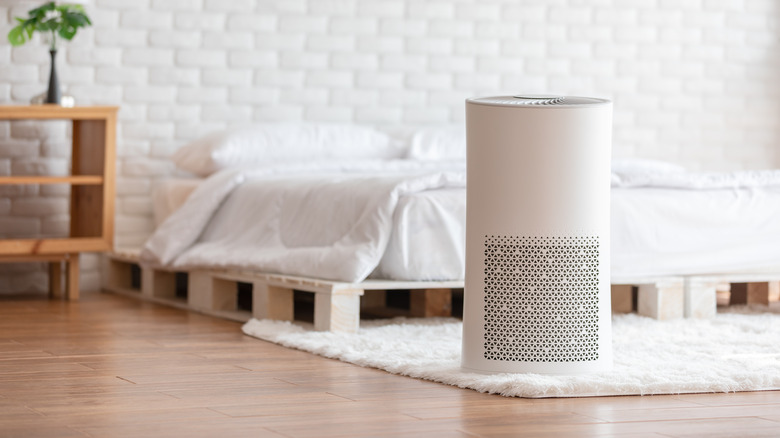Sources Of Indoor Air Pollution You Should Be Aware Of
Indoor air pollution is becoming a health crisis across the world, especially as climate change continues to cause adverse environmental effects. The quality of indoor air has been decreasing through the decades as more people use synthetic building materials, household cleaners, and other pollutants, according to the Environmental Protection Agency (EPA).
Americans spend the vast majority of their time indoors where the pollutant concentration is between two to five times higher than the typical concentration of pollutants outside (via the EPA). Unfortunately, the people who are most susceptible to the negative effects of pollutants (the elderly, very young, and those with certain diseases) spend most of their time indoors. Effects of indoor air pollution can include headaches, dizziness, fatigue, and even heart disease or cancer after long-term exposure, according to the National Environmental Education Foundation (NEEF).
There are many sources of indoor air pollution that you should be aware of.
Nonstick pans may release toxic fumes
Nonstick cookware is amazing. Easily cooking an egg, flipping pancakes, or making a grilled cheese sandwich are all so much easier when they aren't sticking to the pan. However, your nonstick cookware may be releasing toxic fumes when heated at high temperatures. In general, Teflon, the common name for the synthetic compound known as polytetrafluoroethylene (PTFE), is perfectly safe to use at low temperatures, according to Healthline. However, when a nonstick piece of cookware is heated to above 500 degrees Fahrenheit, such as in the oven or on very hot stovetops, the Teflon will begin emitting chemicals into the air.
It should be noted that the main chemical released is perfluorooctanoic acid (PFOA), which has not been used to create Teflon since 2013 (via Healthline). However, if you're still worried, consider using cast-iron or stainless steel pans for cooking, neither of which will release chemicals when heated.
Paints with volatile organic compounds can pose health risks
You may be eager to repaint your home, but make sure that you purchase the correct paint. Many paints, paint strippers, thinner, and wood finishes contain volatile organic compounds (VOCs), which can increase poor air quality, according to Connecticut's Department of Energy and Environmental Protection. Keep an eye out for paint with low levels of VOC by reading the labels. Avoid petroleum distillates, mineral spirits, chlorinated solvents, methylene chloride, trichloroethylene, and trichloroethane, all of which are VOCs.
Finally, try your best to use all the paint you buy. Consider how much paint you need for your project before purchasing so you don't have to store paint inside your home. Gasses from paints can leak, which means it may be unsafe to keep them in your home, according to WebMD. If you must store paint in your home, do so in an area that is not well-trafficked such as the garage or backyard shed.



